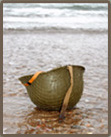Speakers
World War II veterans of both the military and home fronts speak regularly at the museum about their personal experiences. Authors of World War II books are also part of our speaker series.
Museum of World War II - Speaker Series Events:
Please check back soon for our next scheduled speaker!
Admission to these events: $15
Please, no cameras!
Please RSVP to This email address is being protected from spambots. You need JavaScript enabled to view it.
or call (508) 651-1944
Recent Speakers have included:
Major General Robert C. Davenport Cmdr U.S.N. Harold Homefield Joseph Aiello Charles Rogers Joseph Papandrea Gerald Halterman Jack Jublonowski Larry Kirby James F. Arsenault Hugh Ambrose Derek Till George Mendosa Joseph Poshefko
|
Thomas W. Campbell John Katsaros Len Kiley Harry Baker Morley Piper Richard Briggs Harry Wildasin Alba Thompson Israel Arbeiter Samuel Berstein Bernard Raeder Richard Dinning Paul Leahey Erwin Schramma
|
1999 Vision Statement
Kenneth W. Rendell made the following remarks at the opening night dinner of the museum in 1999
My whole life has been about preserving history - preserving letters, the thoughts, the words, the deeds of people in all ages and all areas of life's pursuits. Forming this museum has been very different. This is all about preserving an entire period of history that was being ignored by virtually everyone, particularly museums and libraries. After spending most of my life building collections for others and collections relating more to individuals than subjects, this is by far the most important endeavor that I have undertaken. Collecting all of this together and having it widely available in the way that I think is accurate without modern interpretation is the most important accomplishment of my life.
Forty years ago I started the collection, and for the past thirty years people have asked why I was collecting it. For the last ten years they have asked how did I ever do it. The question of why is the most challenging.
I grew up completely affected by World War II. I was born in 1943 and the atmosphere in the late 1940s was still overwhelmed by the effects of the war. People were just being able to buy new cars - during the war there was no new car production as everything was made for the military. Issues of Life magazine even a few years old contained advertisements from consumer products companies promising that the products would be available again once the war was over. Most importantly, everybody talked about the war; everyone knew what the other had done during the war - where they had served. You knew kids without fathers, you knew people who were badly wounded. There wasn't a Toys R Us up the street, it was War Surplus Is Us, and these were the toys that you played with. I don't think anyone very much younger than myself appreciates how all encompassing the effects of World War II were to someone growing up in the late 1940s and early 50s.
I have also come to realize that there have been two main driving forces behind my collecting. One is intellectual. World War II is the greatest human drama. It had every aspect and every shade of human nature under the greatest pressure. You had the worst evil and the best of the best. From the ferocity of the Russians to the pacifists' attitude of an Italy without any external threat, to the organized evil of Germany and the inherent nature of the Japanese in not valuing anyone's lives. You had the lack of will in England and France to the rising, but stoppable, Nazi scourge, followed by the collapse of France, but the phenomenal spirit of Churchill-led Britain, and of course, the United States which went well beyond its national interests in freeing all parts of the world from both German and Japanese domination. World War II was truly the defining event of the century.
My emotional driving forces, I discovered, were very powerful. First there was my own fear of evil, not fascination with it, and a fundamental feeling, that I had as a kid in the 1940s, as to how the world could fundamentally be good if people killed each other the way they did. Second, and perhaps even more difficult to face, was my own reaction to the randomness of life, particularly in war. There was only a limited amount that people could do to control their destiny, and the rest was luck. Every combat veteran has told me how lucky they were to survive, and almost all of them have described having survivor guilt.
The collection started with psychological warfare, and the first exhibition that I did was in 1990 entitled "With Weapons and Wits," only there weren't any weapons, and it only showed the Allied side of the war - there was no Axis material. It became apparent during that show that I was only showing one side so I began to add the Nazi propaganda. There was no Japanese propaganda as the country simply followed its emperor, and there was no question of having to persuade the masses of Japanese citizens.
A few years later I was in a military store in London at night, and before the lights were turned on, I bumped into a mannequin wearing a German SS black uniform. It really shocked me, and I realized then that the design and color of uniforms was as much a part of the Third Reich's propaganda campaign as any of the printed material was.
Up until this time there were no guns in the collection, except for spy weapons. As a founding Director of the D-Day Museum in New Orleans (now called The National WWII Museum) the exhibit designers talked about the need to use guns to show what soldiers faced. It made sense to me - while my collection was dealing with the intellectual and emotional side, I was leaving out the reality of the violence, and a collection of representative guns from all the warring nations was put together.
I also began to realize about this time that the collection was approaching a point where it was more diverse than any other collection and it was beginning to tell the complete story of World War II in a way no one else had done. It could become a permanent collection. To do so I needed to expand considerably the artifacts relating to the rise of the Third Reich as well as the Holocaust, two areas that I had stayed away from. The first can be considered intellectually - the latter cannot be, and it has been very disturbing putting the collection together.
Today [1999] the museum has the most diverse collection representing all of the countries in World War II, of any museum in the world.
I am frequently asked where do you find all this, and there are hundreds of answers, but basically, most of the nearly 6,000 pieces on display have come directly from veterans who used the artifacts or brought them back or their families. The entire Normandy section was put together in Normandy - all of the pieces were tracked down, either in families or were acquired from a private museum that could not sustain itself. There are only a few full-time professional dealers in military material of World War II, and these helped me greatly.
But by far, the most interesting stories have been dealing directly with the people whose artifacts they were, or they brought them back, particularly from the European Theatre.
I don't know what the future of the museum will be. Because of the way it is set up, it is an interactive museum in the sense that you get out of it what you put into it - there is a minimal amount of signs, and there are no signs describing the historical timeline. Posters and contemporary news accounts are used to do this, and if people don't bring a basic knowledge of World War II with them, then they may find it confusing. Posters are rarely translated because they were designed for the visual impact, and unless it is completely textual, the message is clear from the design. The collection is all about the sense of what it was like to be there, and I want to convey this as much as possible by surrounding people with the images and artifacts, thoughts and words of the particular time and place, and pointing out what model a gun is is not part of that.
My goal is for World War II to be an educational experience, not an entertainment experience. I want to convey the incredible complexity and intensity of a world at war. It is not about people's fascination with evil, though I fully realize that a lot of people are fascinated with it in all aspects of life, but it is about how that same basic fascination people have today was used for marketing the Third Reich to Germans in the 1920s and 30s. It is about the lessons of history that people in the 1920s and 30s wanted to forget from the First World War and therefore didn't face the evil of Nazism. Seven and a half percent of the floor space of the museum concentrates on the Third Reich and its use of symbols, colors, allegories and themes of togetherness, exclusion and mutual enemies, with banners proclaiming "God and Fatherland."
It is disturbing. It seduced a nation. It was ignored by virtually everyone in the 1920s and 1930s. It is ignored by museums today, yet this is the basis for World War II. Not facing the reality of evil empowers evil to even greater depths. The question of how much area should be focused on the rise of the Third Reich has been a serious one. While museums virtually ignore the Third Reich, despite the fact that everything else in the European Theatre is a reaction to it, in other mediums the rise of the Third Reich is intensely chronicled. On television, documentaries run virtually every night on some aspect of the Third Reich, leading my friend Steve Ambrose to refer to the "Hitler Channel." Time-Life's lengthy series, more than twenty volumes on the Third Reich examined every aspect of it, and one has only to look on Amazon to see the enormous number of books in print on Hitler and the Nazis.
People are absolutely fascinated with this subject, but it is not a fascination that I want to focus on. I think I have the proper balance, though a strong argument could be made that there should be much more emphasis with historical artifacts in the rise of the power that started the European war.
History isn't what we wish it had been, but rewriting it, revising it, and viewing it with a perspective of fifty years has become normal. Political correctness was at its pinnacle under Joseph Goebbels in the Third Reich, and this is the only place that it will be found in this museum. Everything is represented as it was seen and known at the time - not how we would have liked it to have been.
The Allies reaction to the Japanese and German attacks was of heroic proportions, and over 80 percent of our space shows this. It is not intended to focus on individuals as heroes. I think Omar Bradley was correct when he wrote, in the letter on display in the reception area, "The greatest single act of courage that I have ever seen occurred when an American soldier took up his weapon and went forth to defend his country….Each time it happens it is still the greatest act of courage one can ask of his countryman."
I hope that my museum conveys this. In addition to the appreciation of the overwhelming complexity and intensity of the war, I hope visitors will agree with Winston Churchill - "This was their finest hour."
YOU CAN HELP



